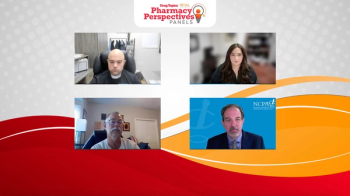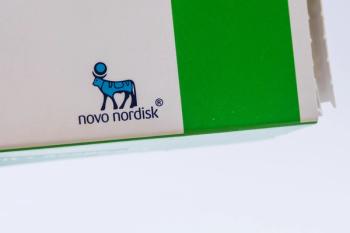
Acetaminophen Misuse in Older Adults Raises Concerns About Liver Damage
Chronic pain affects many older adults, highlighting the need for safe acetaminophen use and effective pain management strategies.
Approximately 75% of older adults experience chronic pain and 86% of Americans report taking more than the maximum daily dose of acetaminophen, according to a 2025 survey from the Health in Hand Foundation.1 Although it remained higher than the 81% in 2010, it was a slight decrease from 89% in 2022.
Acetaminophen is generally seen as safe when taken appropriately. The maximum daily dose for most adults is 4000 mg, although this can vary based on weight and recommendations from a health care provider. In a study of 180,483 acetaminophen-exposed and 402,478 unexposed patients, investigators found an association between acetaminophen and increased risk of perforation, ulceration, bleeding, uncomplicated peptic ulcers, lower gastrointestinal bleeding, heart failure, hypertension, and chronic kidney disease.2
“Older adults have a lot of chronic pain, [and] there's a variety of pain modalities that older adults can use,” Michelle Chui, PharmD, PhD, FAPhA, a professor at the School of Pharmacy at the University of Wisconsin, said. “In general, Tylenol is not unsafe; you just can't overuse it. I think that the trick here is to figure out what is the lowest dose an older adult can take and still receive the effect that they want with that.”
Understanding the Effects of Acetaminophen
There are many medications that can be used for pain management. Among the most popular are nonsteroidal anti-inflammatory drugs (NSAIDS), which focus on the production of prostaglandins.
“Prostaglandins are chemicals in our bodies that mediate the inflammatory response, pain, inflammation, and fever,” Mark Donaldson, BSP, ACPR, PharmD, FASHP, FACHE, associate principal and business development partner at Vizient Pharmacy Enterprise Solutions, said. “What the body typically will do is convert arachidonic acid to prostaglandins, and that conversion is mediated by an enzyme known as cyclooxygenase.”
There are multiple variants of cyclooxygenase (COX), which include COX-1, COX-2, COX-3, and COX-4, which are all suggested to be involved in pain and inflammation. NSAIDs block the action of COX-1 and COX-2, but even in 2025, the mechanism of action for acetaminophen is only hypothesized. Because acetaminophen blocks pain and reduces fever but does not have anti-inflammatory effects, it is assumed that it affects COX-1 or COX-2 and has effects on the serotonergic pathways.
As for guidelines, there can be many different sources but what is in them might not always be consistent.
“The easiest thing to understand right now [and] the one thing we can all agree upon is that too much acetaminophen is not a good thing,” Donaldson said. “For years in an otherwise healthy adult, 4000 milligrams in a 24-hour period really should be kind of the ultimate maximum, if you will, a guardrail. So, that's in an otherwise healthy adult, basically 2 extra-strength Tylenol, therefore 500 milligrams each.”
Donaldson said the FDA and most regulatory bodies agree that when it comes to acetaminophen, less is more. Jaspreet Kaur, BAMS, MPH, PhD, a research fellow of translational medicine in the School of Medicine at the University of Nottingham, United Kingdom, said acetaminophen has been widely available as an OTC drug and is considered the safest analgesic for mild to moderate pains. In the United Kingdom, the guidelines come from the National Institute of Health Care Excellence and the American College of Rheumatology Guidelines.
Kaur added that for some formularies in the UK, the maximum dose is even lower, especially for older populations that have lower body weight, patients with liver disease, or patients who have heavy alcohol use.
“In terms of the dose frequency, it has been recommended that a person should take 500 to 1000 grams for every 4 to 6 hours of intervals,” Kaur said. “The dosing frequency should not be reduced to less than 4 hours.”
What Adverse Effects Are Associated With Acetaminophen?
“We're all well aware in pharmacy circles that too much acetaminophen is very hepatotoxic. It's hard on the liver,” Donaldson said. “Anytime patients start to complain of, let's say, right upper quadrant pain, basically where your liver is, and if they have a history of acetaminophen use, that correlation could be made.”
When looking at other adverse effects, gastrointestinal effects are probably the most common, including diarrhea, nausea, and vomiting, according to Donaldson. However, in general, acetaminophen does not have any significant effects on all body systems, such as any cardiovascular risk.
“The number of older adults that are diagnosed with acute liver failure, in part because of acetaminophen use, there is very good incidence of double dipping,” Chui added. “Where older adults are taking OTC acetaminophen and also prescription acetaminophen with their pain med[ications] and/or combination over-the-counter products.”
Chui said that double dipping can also occur in combination products, including cold medication. She added that older adults might have visual or cognitive impairments that might affect their ability to safely consume acetaminophen products.
“We expect in the over-the-counter safety world that any older adult or any patient can go and waltz into a retail pharmacy or grocery store or even dollar store and be able to safely identify the right product for them and select [it] and take [it] home and use [it] safely,” Chui said.
In a study of 288 older adults, Chui and colleagues found that, across 20 pharmacies, 80% of older adults demonstrated misuse of OTC medication. Many patients tended to misuse the medication because they were not taking it based on the label or took medication that was contraindicated.
The Pharmacist’s Role in Chronic Pain for Older Adults
“When I have spoken to pharmacists, 100% of them will say, ‘we want to help patients select over-the-counter medication,’” Chui said. “We think that that's our job. We're trained in this area where we can help older adults select over-the-counter medication, and we want to do this.”
Chul said that pharmacists are often stuck behind the counter, despite wanting to help and counsel patients. When a patient sees a pharmacist is busy, they might not want to interrupt them to ask questions. In 2 other studies, Chui found that when pharmacies reposition the OTC section to be closer to the pharmacy counter, patients can look up to the pharmacist and ask questions, or the pharmacist can see a patient who might be struggling to find the right medication.
In general, Tylenol is not unsafe; you just can't overuse it. — Michelle Chui, PharmD, PhD, FAPhA
“It's not just about selecting, but it's about empowering older adults to be able to do this by themselves because older adults want the autonomy; they don't necessarily want to have to get a prescription for this,” she said. “Improving their autonomy, improving their confidence, improving their ability to do this safer, but also reducing workload for pharmacists and technicians, is really important too.”
Because of the pharmacist’s accessibility, they often have a good relationship with their patients. Kaur said that pharmacists are able to have a comprehensive medication history of patients, so they can check to see if a patient has contraindications or if they are taking a prescription acetaminophen product. They can also flag patients who have prolonged use of acetaminophen, have lower body weight, have chronic liver disease, kidney disease, or have heavy alcohol consumption. Donaldson added to the sentiment, saying that pharmacists should be encouraged to write down information for patients or give them take-home material so that they can reference the information at home.
“As we all get older, we have a little bit of cognitive decline. We can't always remember things, and in most cases, when I worked with patients in the pharmacy, they tended to forget everything I told them as soon as they walked out the door or they suddenly remembered a lot of questions they wanted to ask me soon as they walked out the door,” Donaldson said. “While you have that captured population in front of you, never be afraid to pull out a piece of paper and a pen, write down very specifically what's most important for them so that they can take that home and refer to it.”
When discussing pain, there are different types and different definitions, which makes it difficult to treat and emphasizes the need for management to be individualized. For mild pain, Donaldson said OTC products would probably be best, and for mild to moderate pain, some OTC products might work, but a combination of NSAIDs and acetaminophen might be the best. However, for moderate to severe pain, prescription medication could be an option. The challenge is acute pain and chronic pain, Donaldson said.
“Pain is becoming much more complex, acute, or chronic; you can have neuropathic pain, cancer pain, bone pain, [and] lots of different kinds of pain,” Donaldson said. “The role that we play is listening to our patients, as we always do, trying to help match the right drug [and] right dose for the right patient.”
Although acetaminophen might not be as safe as previously thought, it is still one of the safest options for patients. Chui stated that acetaminophen is pretty safe, while NSAIDs are seen as less safe.
“There are topical agents that you can use, both nonsteroidal topical agents . . . I would say that in general, Tylenol is not unsafe,” Chui said. “I think the messaging here is more is not better. Take the minimum amount that you can take, and a lot of older adults actually are minimalist. They want to stay away from drugs, and that's great. Then there's other older adults that think that all OTCs are safe; therefore, [they] can take as many as [they] need, and that's the danger zone.”
READ MORE:
Ready to impress your pharmacy colleagues with the latest drug information, industry trends, and patient care tips? Sign up today for our
REFERENCES
1. Gallagher A. Majority of Americans understand risks of increased acetaminophen usage. Drug Topics. May 23, 2025. Accessed August 18, 2025. https://www.drugtopics.com/view/majority-of-americans-understand-risks-of-increased-acetaminophen-usage
2. Kaur J, Nakafero G, Abhishek A, Mallen C, Doherty M, Zhang W. Incidence of side effects associated with acetaminophen in people aged 65 years or more: a prospective cohort study using data from the clinical practice research datalink. Arthritis Care Res (Hoboken). 2025;77(5):666-675. doi:10.1002/acr.25471
Newsletter
Pharmacy practice is always changing. Stay ahead of the curve with the Drug Topics newsletter and get the latest drug information, industry trends, and patient care tips.






































































































































